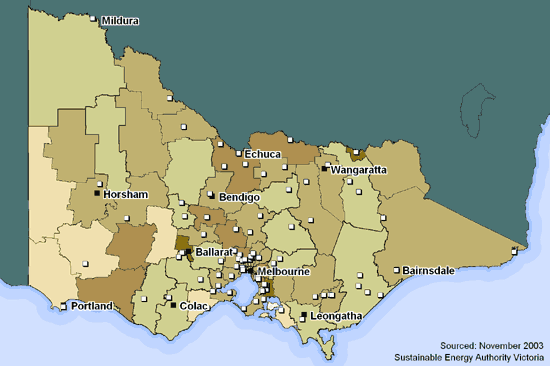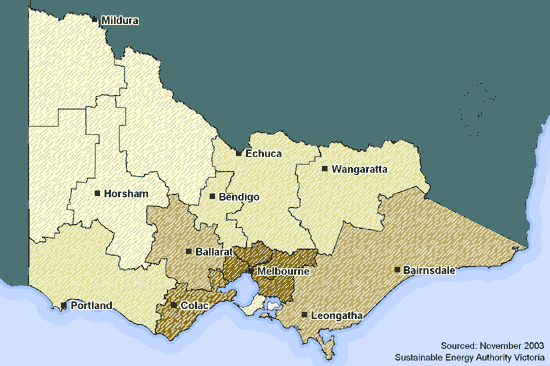The above map indicates the number of sows per
postcode and was sourced from the Victorian Piggeries
Association. Bioenergy from agriculture generally
comes in the form of wastes such as animal or crop
waste.
Municipal Solid Waste Resources:
Household Waste


Municipal Solid Waste Resource Example–Total
of kilograms of waste per household
The above map shows municipal Solid
Waste by Local Government Area and was sourced from
EcoRecycle. Municipal solid waste incorporates recycling
waste, green waste, and garbage waste. These three
components make up the total waste shown in the
above map. The majority of garbage collected ends
up in landfill sites. Landfill sites can be used
to produce electricity from the decomposing process
of garbage and subsequent gas produced.
Sewage Resources Sludge


Sewage Resource Example–Dry tonnes of sludge
produced per year
Dry sludge is a waste produced within
Victorian's sewage network. It is recorded by water
authority boundaries and was sourced from the Environmental
Protection Agency (EPA).
Wood Resource Construction and
Demolation Waste


Wood Resource Example–Construction and Demolition
tonnes ('000) produced per year
Construction and Demolition waste
is recorded for Regional Waste Management groups
and was sourced from EcoRecycle. Other wood waste
resources include waste from commercial and industrial
development and also from timber processing.
http://www.sustainability.vic.gov.au/www/html/2113-bioenergy.asp?intSiteID=4
Australia | Fiji | FS of Micronesia | Kiribati |
Marshall Islands | Nauru | New Zealand | Palau | Samoa
| Solomon Islands | Tonga | Tuvalu | Vanuatu










